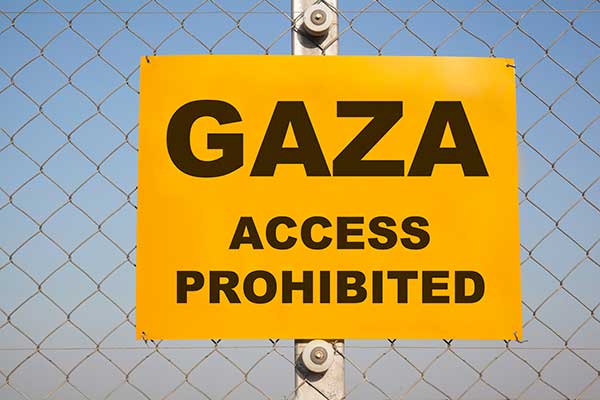‘Free Palestine!’ says Dave on Twitter. He has a tiny Palestinian flag next to his profile and 39 followers. Dave is from Norwich.
I ask him which part he wants to free, to which he replies, ‘all of it,’ and I know instantly that he won’t be able to identify either part on a map.
Palestine is a busted flush, a game of two halves—and one half is in injury time. On the one hand, the West Bank is full of all those place names we learnt in Religious Education classes, and that we celebrate every Christmas: Bethlehem, Nazareth and East Jerusalem. Separated from the West Bank by a swathe of Israeli territory the Gaza Strip is an embarrassing afterthought that in 1516 contained nothing but the ruined town of Gaza and an inactive port. It’s been passed around by various empires, including the Romans, the Ottomans, the British and the Egyptians, who all failed to find anything useful to do with it, and Egypt ceded it to Israel in 1967 after the six day war without grief.
After continued conflicts and uprisings, Israeli Prime Minister Yitzhak Rabin said in frustration in 1992 “I would like Gaza to sink into the sea, but that won’t happen, and a solution must be found.” That solution turned out to be parcelling the Gaza Strip off to a Palestinian administration under the Oslo agreement of 1993. Gaza was orphaned once again.
To assert Palestinian control after Israel left Yasser Arafat established the first provincial headquarters of the Palestinian Authority in Gaza City.
The Gaza Strip turned out to be a wild child, even by Palestinian standards. Bombings and uprisings culminated in the Second Intifada in 2000. Israel decided to wall up its problem child and erected a heavily fortified barrier between Israel and Gaza Strip in 2000/2001. Egypt also erected a barrier, and these barriers prevented all free travel from Gaza. Both countries seemed to think that if they built a big enough wall the neighbours would eventually move out. Except that the neighbours had nowhere to go, played very loud music and threw rocks over the fence. Even if they wanted to move out the barriers kept them in.
In 2005 the remaining 9,000 Israeli settlers left the Gaza Strip, along with what remained of the Israeli military. Gaza was abandoned, shunned by Israel and the world, with a population of over 2 million people effectively confined in an open prison. But at least it had the Palestinian Administration.
When Hamas won a 56% majority in Palestinian elections in 2006, it refused to recognise Israel’s right to exist and to renounce violence. It led to sanctions and violent clashes with Fatah, the political opposition. Hamas blamed this civil war on Israel. There followed continued war with Israel and the deaths of hundreds of civilians, as well as Fatah affiliated Palestinians. Since 2005, Israel has carried out at least six major military offensives in Gaza with 2014 being the most brutal. More than 2,000 Palestinians were killed in a seven-week Israeli assault.
Many countries, including the UK, designate Hamas as a terrorist organisation, and its actions certainly qualify it. However in 2021 The Times of Israel calculated that Hamas had around 30,000 men. That leaves a civilian population of over 2 million people including women and children under siege by not only Israel but the rest of the world. Their Palestinian passports go unrecognised by most countries – that’s if they could leave the country at all through Israeli controlled airspace and land borders.
The abominations carried out by Hamas in Israel must be condemned and punished. But the world should not turn its face away from the imprisoned and abused inhabitants of the Gaza Strip who are innocents in this conflict.






